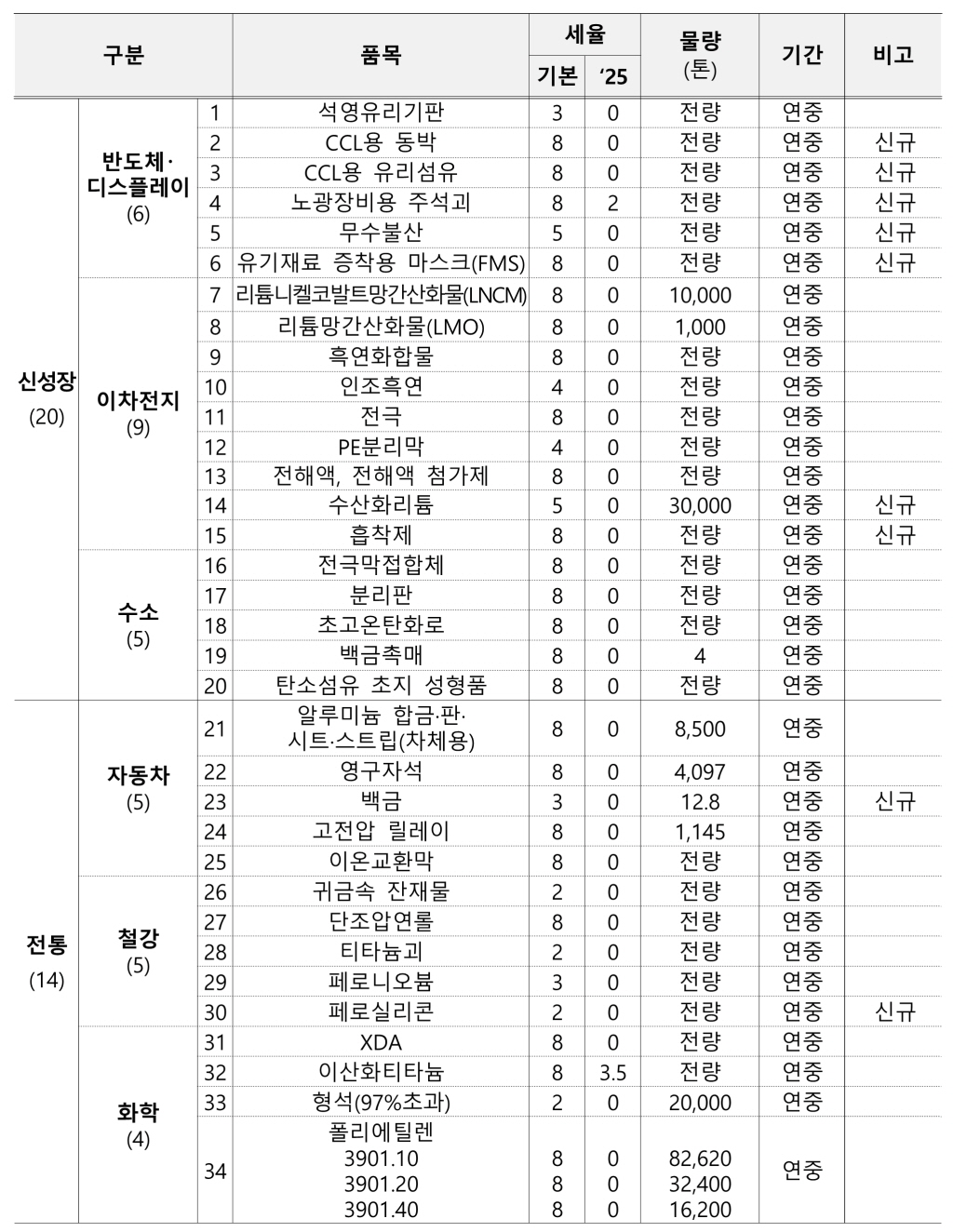정부가 국제경쟁이 치열해지고 있는 핵심 고부가가치 산업인 반도체, 디스플레이 분야의 경쟁력을 뒷받침하기 위해 CCL용 동박 및 유리섬유, 노광장비용 주석괴, 무수불산, 유기재료 증착용 마스크(FMS) 등 5개 품목을 할당관세 적용 대상에 추가했다.
무수불산·CCL용 동박·CCL용 유리섬유·FMS 등 0%
정부가 반도체, 디스플레이 소재에 대한 할당 관세 지원을 확대하며, 신성장 분야 산업 경쟁력 강화에 나선다.
기획재정부는 2일 2025년 정기 할당관세 계획을 발표했다.
이에 따르면 정부는 국제경쟁이 치열해지고 있는 핵심 고부가가치 산업인 반도체, 디스플레이 분야의 경쟁력을 뒷받침하기 위해 CCL용 동박 및 유리섬유, 노광장비용 주석괴, 무수불산, 유기재료 증착용 마스크(FMS) 등 5개 품목을 할당관세 적용 대상에 추가하기로 했다.
이차전지 분야의 경우 기존에 지원되던 인조흑연, 전극, 전해액, PE분리막 등에 추가해 수산화리튬과 흡착제에 대해 신규로 할당관세를 적용하기로 했다.
한편 정부는 지속되고 있는 서민 경제의 부담을 완화하고자 내년에도 발전용 및 도시가스에 사용되는 LNG에 대한 할당관세 지원을 동절기(1분기 및 4분기)에 유지하기로 했다(관세율 3%→0%).
아울러 도시가스가 제공되지 않는 농촌지역 주민들의 취사와 수송용으로 사용되는 LPG와 LPG 제조용 원유에 대한 할당관세를 내년 상반기까지 연장하고(3%→0%), 하반기 추가 연장 여부는 내년에 검토하기로 했다.
나프타 제조용 원유의 경우, 세계경제의 불확실성과 구조적 공급과잉에 직면해 대규모 수익하락을 경험하고 있는 석유화학 업계의 경영난을 덜어주고 사업 다각화와 구조조정을 촉진할 수 있도록 할당관세를 연중 적용하기로 했다(3%→0%).
또한 서민의 먹거리 물가안정을 도모하기 위해 농식품부 등 관계기관과 협의하여 국내에서 생산되지 않거나 공급물량이 부족하여 가격 상승의 우려가 있는 옥수수(가공용), 대두, 설탕, 감자전분 등 식품 원료에 대한 지원을 유지하고, 최근 가격이 불안정하여 현재 긴급할당관세로 지원하고 있는 카카오두, 커피·오렌지농축액, 무, 당근 등 7개 품목에 대해서 정기할당관세로 계속 지원하기로 했다.
기획재정부는 이러한 내용을 담은 ‘2025년 탄력관세 운용계획’을 수립해 2024년 12월2일 입법예고하며, 확정된 안은 내년 1월1일부터 시행된다.

▲품목별 할당관세율, 한계수량, 적용기간
